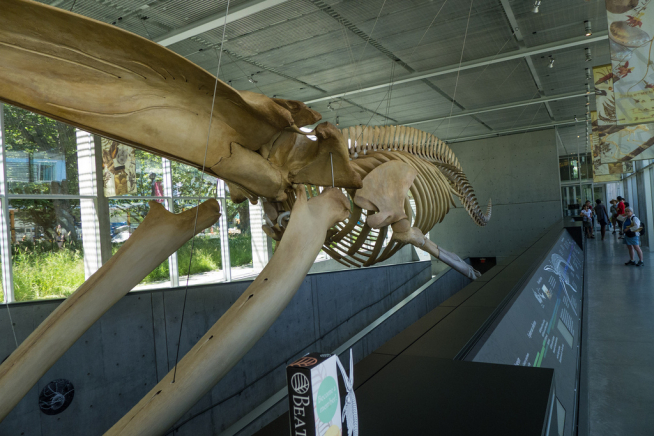BREAKING: Royal Ontario Museum to recover two rare Northwest Atlantic blue whales

ROM Biodiversity will send a crew to salvage two blue whales that washed ashore on the coast of Newfoundland last week. These unfortunate deaths due to unusual ice formations in the ocean are an unprecedented opportunity to study one of the more endangered species of marine mammals. We have only one rib of a blue whale in our collection and there are few complete skeletons in museums throughout the world.
At approximately 30 metres in length and 180 tons in weight, the blue whale is the largest species to ever live on Earth. So they are about the same length as Gordo the Barosaurus in the ROM dinosaur gallery, but almost 10 times as heavy.
Retrieving two blue whales will be easier said than done. Stay tuned to @ROMBiodiversity...
Quick Facts
- In April 2014, at least nine blue whales were caught in the ice off the southwest coast of Newfoundland and were killed. The remains of two whales washed ashore in the coastal communities of Rocky Harbour and Trout River, Newfoundland and Labrador.
- Blue whales are listed as endangered under Schedule 1 of the federal Species at Risk Act. They are regularly seen along the southwest corner of Newfoundland in the spring where they feed along the ice edge, and have been killed by ice movement in this area previously.
-
It is unprecedented to have this number of this endangered species perish at once in a single area. The deaths are likely as a result of the record-breaking severe ice conditions this winter in the North Atlantic, combined with the unique topography of the Newfoundland southwest coast.
Read more: "Solution in the works to deal with whale carcasses on Newfoundland shore" Globe and Mail, May 1, 2014
